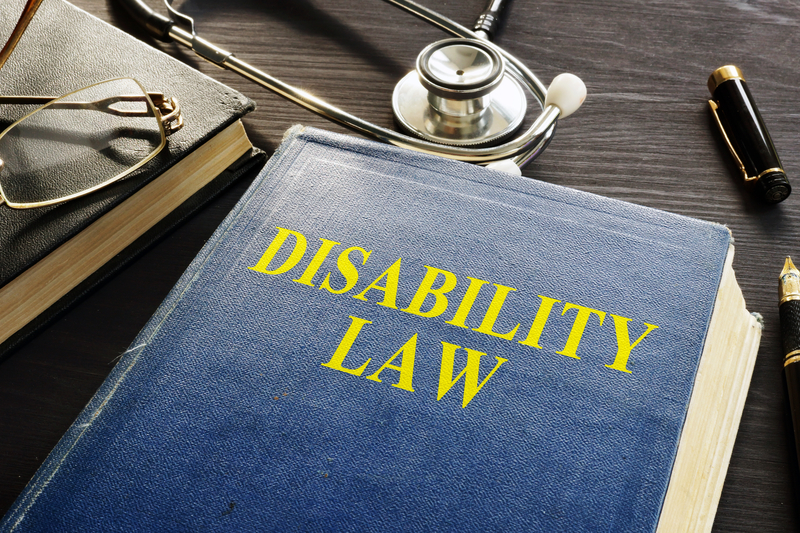
The ADA is a civil rights law that prohibits discrimination against people with disabilities in every area of public life, such as schools, jobs, transport, and all private and public areas that are available to the public. The purpose of the legislation is to make ensure that people with disabilities have all the same rights and opportunities as everybody else have. The ADA gives civil rights protections to people with disabilities similar to those provided to people on the grounds of race, color, gender, national origin, age, and faith. So, it guarantees equal chance and opportunity for people with disabilities in public accommodations, employment, state and local government agencies, and telecommunications. The ADA is divided into five names (or segments ) that relate to various regions of life.
The ADAAA made quite a few important adjustments to the definition of"handicap" The fluctuations in the definition of handicap in the ADAAA use to all titles of the ADA, such as Title I (employment practices of private employers with 15 or more employees, state and local governments, employment agencies, labor unions, representatives of the company and joint management-labor committees); Name II (applications and actions of local and state government companies); and Title III (private entities that considering places of public accommodation).
Tier I
Equal Employment Opportunity for People with Disabilities
This title is intended to help individuals with disabilities get identical employment opportunities and advantages available to individuals without disabilities. Employers need to provide reasonable accommodations to qualified applicants or workers. A reasonable accommodation is any modification or adjustment to a job or the work environment which will allow an employee or applicant with a disability to take part in the application process or to perform vital job functions.
This part of the legislation is governed and enforced by the U.S. Equal Employment Opportunity Commission(connection is outside ). Employers with 15 or more employees must comply with this legislation. The regulations for Title I specify disability, set guidelines for the lodging process, address clinical examinations and questions and specify "direct threat" if there's a significant risk of significant harm to the safety or health of the individual worker with a disability or other people.
Title II (State and Local Authorities )
Nondiscrimination based on Disability in State and Local Government Services
It applies to all local and state governments, their departments and agencies, and any other instrumentalities or special purpose districts of local or state authorities. It clarifies that the requirements of section 504 of the Rehabilitation Act of 1973, as amended, for public transport systems that receive federal financial assistance, and extends coverage to all public entities providing public transport, whether they receive federal financial aid. It establishes detailed standards for the performance of public transit systems, including commuter and intercity rail (e.g., AMTRAK).
This title defines the administrative procedures that need to follow, such as prerequisites for self-evaluation and planning, practices, and procedures where necessary to prevent discrimination; architectural obstacles to identify; and also the demand for effective communication with individuals with hearing, vision, and language disabilities. This name is governed and enforced by the U.S. Department of Justice.
Title III (Public Accommodations)
Nondiscrimination based on Disability by Public Accommodations and in Commercial Facilities
This name prohibits private areas of public accommodation from discriminating against people with disabilities. Examples of people accommodations consist of privately-owned, rented, or operated facilities such as hotels, restaurants, retail merchants, physician's offices, golf courses, private schools, daycare facilities, gyms, sports stadiums, movie theaters, etc. This name sets the minimum criteria for access for alterations and new construction of facilities. Additionally, it requires public accommodations to remove barriers in existing buildings where it's not difficult to do so without much trouble or cost. This name directs companies to make"reasonable modifications" to their regular means of doing things when working with individuals with disabilities. Additionally, it demands that they take actions required to communicate effectively with clients with eyesight, hearing, and speech disabilities. This name is governed and enforced by the U.S. Department of Justice.
Title IV (Telecommunications)
This title requires Internet and telephone businesses to give a national system of interstate and intrastate telecommunications relay services which makes it possible for people with hearing and speech disabilities to communicate on the phone. This name also requires closed captioning of federally funded public service announcements. This name is regulated by the Federal Communication Commission.
Title V (Miscellaneous Provisions)
The concluding name includes an assortment of provisions about the ADA as a whole, such as its relationship to other legislation, state resistance, its effects on insurance companies and advantages, the prohibition against retaliation and coercion, illegal use of medication, and lawyer's fees. This name also provides a listing of particular conditions that aren't to be regarded as disabilities.
Voting Accessibility for the Elderly and Handicapped Act
The Voting Accessibility for the Elderly and Handicapped Act of 1984 mostly requires different polling places across the United States. So that it can be physically accessible to individuals with disabilities for federal elections. Where there is no location is available to function as a polling place, a political person must give the alternative way of casting a ballot on the day of the election. This legislation also requires states to make available registration and voting aids for handicapped and elderly voters, including data by TTYs or comparable apparatus.

National Voter Registration Act
The National Voter Registration Act of 1993, also known as the "Motor Voter Act," makes it easier for all Americans to give their basic right to vote. One of the main purposes of this Act is to increase the low registration rates of minorities and individuals with disabilities that occur due to discrimination. The Motor Voter Act requires all offices of State-funded applications which are primarily engaged in providing services to individuals with disabilities to offer all program applicants with voter registration forms, to assist them in completing the forms, and to transmit completed forms to the proper State official.
Civil Rights of Institutionalized Persons Act
The Civil Rights of Institutionalized Persons Act (CRIPA) permits the U.S. Attorney General to investigate conditions of confinement at State and local government institutions such as prisons, juvenile correctional facilities, and institutions for those who have developmental or psychiatric disabilities. Its objective is to allow the Attorney General to uncover and correct deficiencies that seriously affecting the health and safety of all residents of institutions.
The Attorney General may initiate civil lawsuits where there is reasonable cause to believe that conditions are egregious or flagrant, that they're subjecting residents to grievous harm and they are a part of the full enjoyment of constitutional or federal rights, including title II of the ADA and section 504 of the Rehabilitation Act.
People with Disabilities Education Act
Individuals with Disabilities Education Act (IDEA) requires public schools to make available to all eligible children with disabilities a free appropriate public education in the least restrictive environment appropriating to their unique requirements.
IDEA requires public school systems to develop appropriate Individualized Education Programs (IEP's) for each kid. The specific special education and related services outlined in each IEP reflect the individualized needs of every pupil.
IDEA also mandates that particular procedures follows in the creation of the IEP. Each student's IEP must develop by a group of knowledgeable persons and must be review annually. The group includes the child's teacher; the parents, subject to certain limited exceptions; the child, if determined appropriate; a service representative who's qualified to provide or oversee the provision of special education; along with other people at the parents' or agency's discretion.
If parents disagree with the proposed IEP, they can ask for a due process hearing and a review by the State educational agency if applicable in that state. They also can appeal to the State agency's decision to the State or Federal court.
Rehabilitation Act
The Rehabilitation Act restricts discrimination on the basis of handicap in programs conducting by Federal agencies, in programs receiving Federal financial assistance, and the employment practices of Federal contractors. The criteria for determining employment discrimination under the Rehabilitation Act are just like those used in Title I of the Americans with Disabilities Act.
Section 501
Section 501 requires action and nondiscrimination in employment by Federal agencies of the executive branch. To acquire more information or to submit a complaint, employees should contact their agency's Equal Employment Opportunity Office.
Section 503
Section 503 requires affirmative action and prohibits employment discrimination by Federal government contractors and subcontractors with contracts of over $10,000.
Section 508
Section 508 establishes requirements for electronic and information technology developed, maintained, procured, or employed by the Federal authorities. Section 508 requires Federal electronic and information technology to be accessible to individuals with disabilities, including employees and members of the general public.
An accessible information technology system is one, that can operate in many different ways and doesn't rely upon a single sense or ability of this consumer. As an instance, a system that offers output only in visual format might not be available to individuals with visual impairments, and a system that offers output only in audio format might not be available to individuals that are deaf or hard of hearing. Some people with disabilities may require accessibility-related software or peripheral devices to use systems that comply with Section 508.
Architectural Barriers Act
The Architectural Barriers Act (ABA) requires that buildings and facilities that design, constructed, or altered with Federal funds, or leased by a Federal agency, comply with Federal standards for physical access. They don't address the activities conducted in those buildings and amenities.
